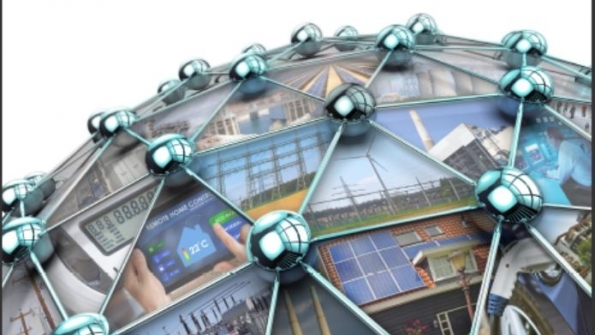 EPRI Unveils Study on the Integrated Electric GridFeb 11, 2014 - ecmweb.com
“The grid is expected to change in different, perhaps fundamental ways, requiring careful assessment of the costs and opportunities of different technological and policy pathways to fully integrate DER into the electric power system,” said Dr. Michael Howard, President and CEO of EPRI. “If we are going to realize the full value of these resources, while at the same time continue to provide affordable and reliable electricity, we need to integrate them into every aspect of grid planning, operations and policy.” “These systems can be complementary and not competitive if we acknowledge that both systems benefit the customers and integrating them will enhance the benefit to all customers, while failure to integrate fully could lead to higher costs and lower reliability.” The paper released yesterday, which is the first in a series of integrated grid studies from EPRI, outlines an action plan that needs to be addressed by all stakeholders with examples to support fact-based discussions. The study leverages EPRI research in this area and the lessons learned from the circumstances surrounding Germany’s extensive deployment of distributed solar PV and wind that offers important lessons about the technical and economic value of planning for integration of DER. The paper describes a critical need for collaborative solutions, including:
When fully integrated with today’s system, EPRI anticipates these resources can contribute more effectively to system capacity, flexibility, efficiency and environmental attributes. Yesterday at a meeting of the National Association of Regulatory Utility Commissioners, EPRI unveiled an initiative to provide stakeholders with knowledge, information and tools needed in developing an integrated grid:
The EPRI paper, “The Integrated Grid:  Realizing the Full Value of Central and Distributed Resources,” can be downloaded here: epri.co/3002002733. For additional information, you may also visit www.epri.com/integratedgrid. |
Email this page to a friend
If you speak another language fluently and you liked this page, make
a contribution by translating
it! For additional translations check out FreeTranslation.com
(Voor vertaling van Engels tot Nederlands)
(For oversettelse fra Engelsk til Norsk)
(Для дополнительных
переводов проверяют
FreeTranslation.com )


